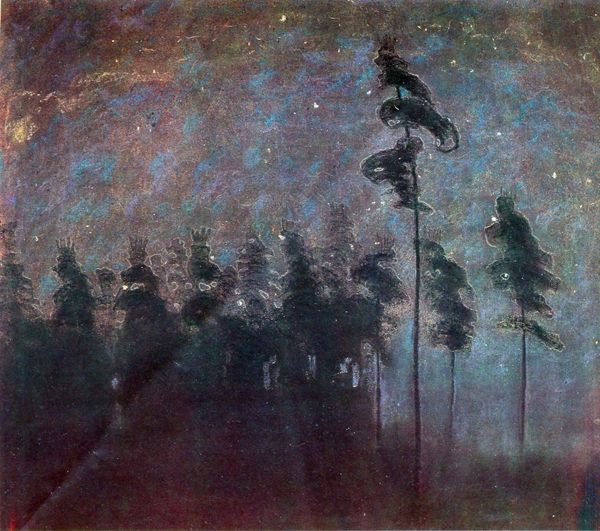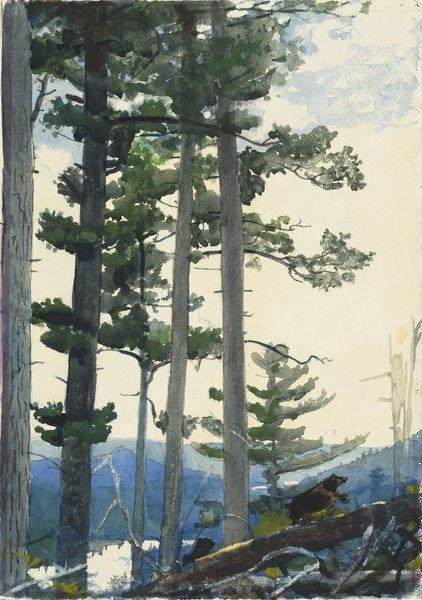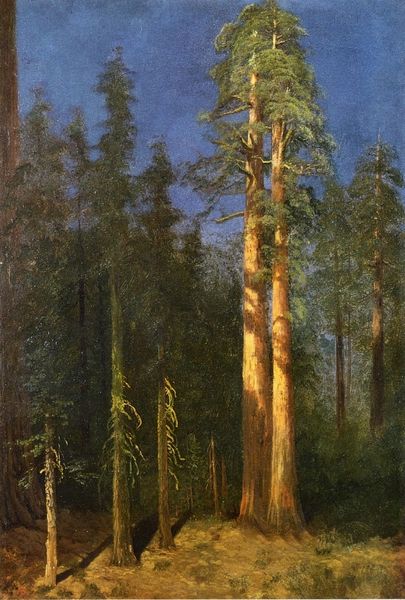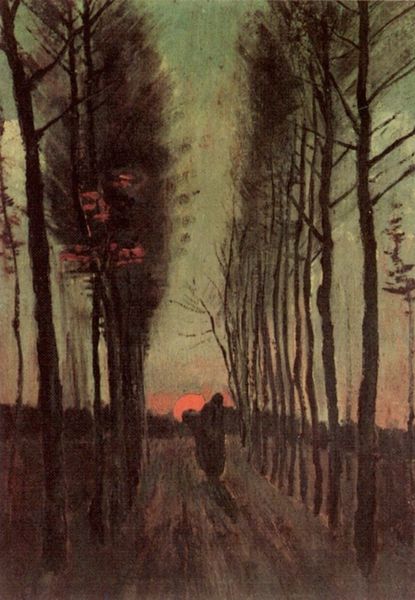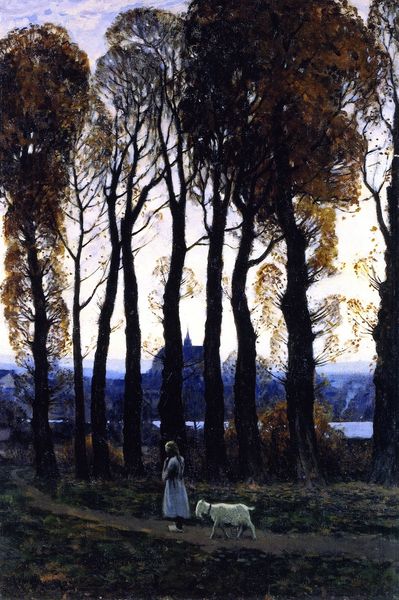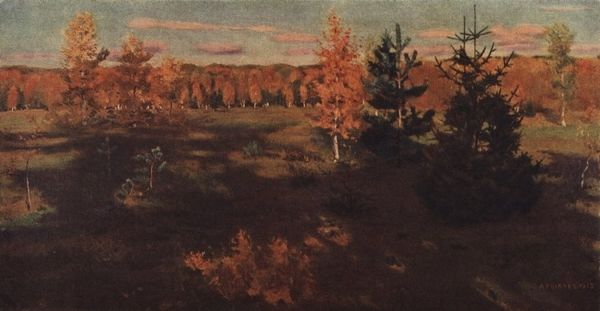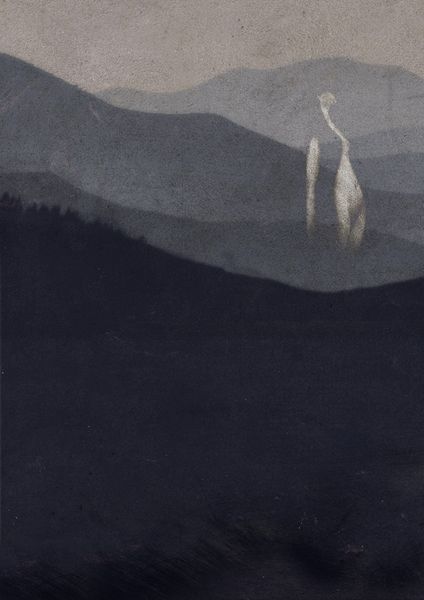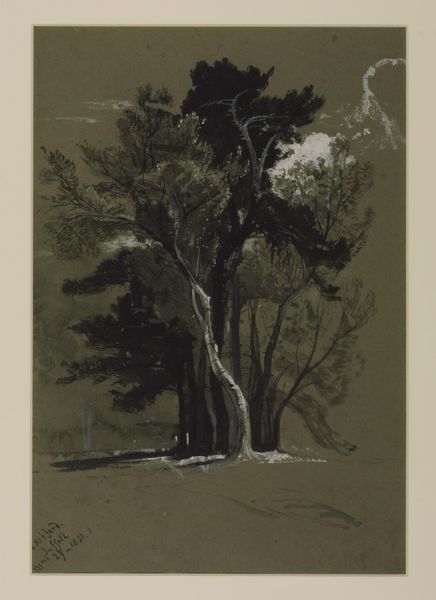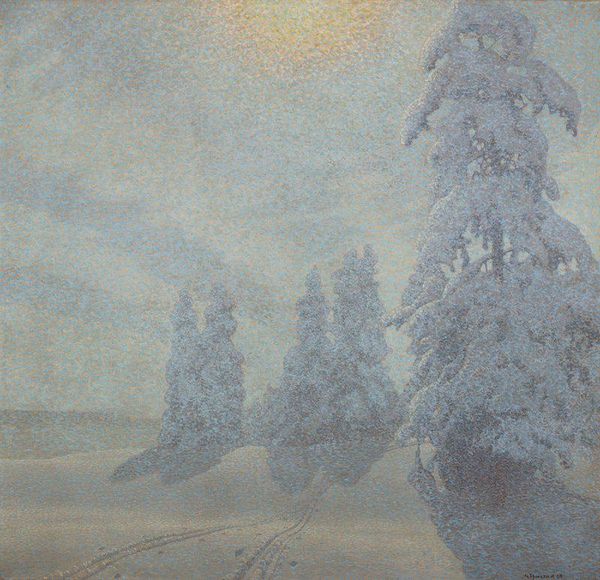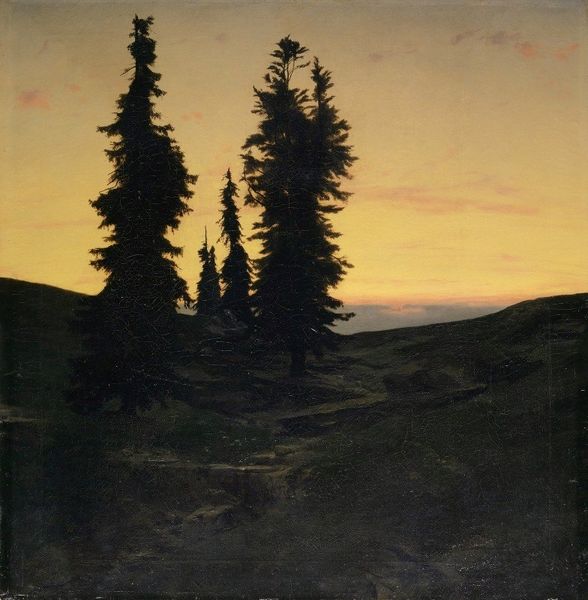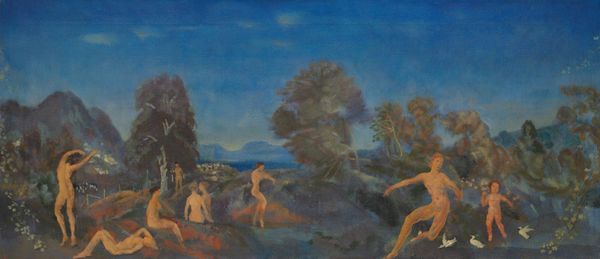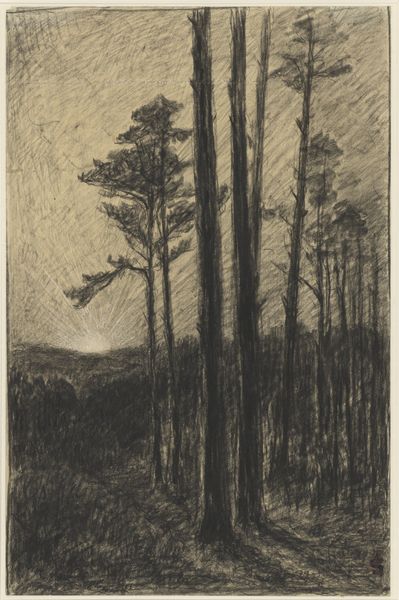
Copyright: Public domain
Editor: Here we have Theodor Kittelsen's "Black Grouse," an oil painting from around 1900. There's something so captivating about the darkness and the silhouette of the trees. How would you interpret this work? Curator: Kittelsen's art frequently taps into Norwegian folklore and a strong sense of national identity. Knowing this, consider the landscape itself as a symbol. How does this stark, almost gothic portrayal of nature play into the construction of a Norwegian cultural identity at the turn of the century? Editor: So you're saying it's more than just a pretty picture of a night scene; it's making a statement? Curator: Exactly. Think about the romanticism associated with landscape painting during this era. But Kittelsen presents a darker, perhaps more realistic or even foreboding view. Does this depiction challenge the traditional idyllic portrayals of nature, perhaps reflecting a complex relationship between the nation and its environment? Editor: That's a fascinating way to look at it! I hadn't considered how it might be commenting on the idealization of nature. Curator: Furthermore, what public role do you think an image like this served? Was it meant for private contemplation, or was Kittelsen actively trying to shape a particular vision of Norway for a wider audience? Consider also the rising tide of nationalism at the time, and how art was often deployed to cultivate shared feelings and historical connections. Editor: It makes you wonder about the stories people were telling themselves about their nation back then. It’s much more loaded than just a landscape. Curator: Precisely! Kittelsen gives us a glimpse into those loaded narratives through this atmospheric work. Editor: I will never look at landscape art the same way again! Thanks for opening my eyes.
Comments
No comments
Be the first to comment and join the conversation on the ultimate creative platform.
